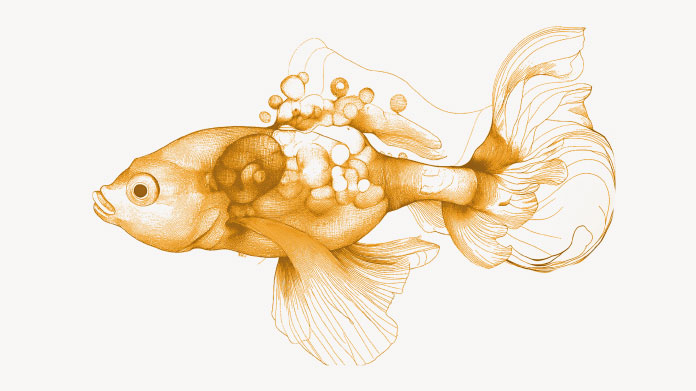The 7 most effective Ayurvedic medicinal plants
For thousands of years, Ayurvedic medicine has successfully relied on diet and the use of plants to take care of the body and mind. Discover 8 essential Ayurvedic medicinal plants.

Ayurveda: a traditional system of medicine dating back more than 2500 years
The millennia-old traditional Indian system of medicine Ayurveda, or Ayurvedic medicine, is based on mind-body harmony. That’s why it has come to be a major source of inspiration and reference for modern naturopaths (1).
A sister science to yoga, Ayurveda is all about achieving equilibrium in the body by eating a healthy, balanced diet, and above all, by using plants with specific benefits. Its logic runs counter to Western medicine since Ayurveda takes a preventive rather than curative approach (2). Without further ado, let’s look at its 8 key plants.
Holy basil (or tulsi)
Known in Sanskrit as the 'incomparable one', tulsi, like mint, is an aromatic plant from the lamiaceae family. It is also thought to be an incarnation of the goddess Lakshmi, hence its moniker 'beloved of Vishnu'.
Rich in phenolic compounds and antioxidants, holy basil contains carotenoids, iron, trace-elements and B group vitamins.
This Ayurvedic plant is particularly associated with combatting stress and helping to revitalise the body (3-4). You’ll find it in certain synergistic formulations, combined with other stress-busting compounds (such as the supplement Adrenal Support).
Boswellia serrata
Boswellia serrata is a tree native to India, bearing small, white flowers.
Its resin has been used for thousands of years in India, China and Africa, particularly for burning during religious ceremonies. The smoke it emits is believed to induce a meditative state and spiritual awakening in those taking part in these rituals.
But boswellia is also known to have more direct benefits for health. Extract of Boswellia serrata is particularly associated with supporting joint comfort(5). In terms of supplements, it’s best to opt for an oral boswellia supplement with a high AKBA content(such as Super Boswellia). Boswellia is also available as a topical cream for applying directly to joints.
Tribulus terrestris
A perennial plant from the Zygophyllaceae family, Tribulus terrestris, also known as Maltese Crosse, grows naturally in the hot, dry regions of Asia and Africa.
Its medicinal properties have been known for thousands of years and Tribulus terrestris forms part of the Ayurvedic pharmacopoaeia and Chinese medicine.
With a high content of saponins and protodioscins, Tribulus terrestris plays a role in supporting good respiratory and cardiovascular health, as well as a healthy nervous system and strong immunity (6). It is used, in particular, for its effects in supporting healthy sexual activity, namely hormone and sex organ function (try the supplement Tribulus Terrestris).
Bacopa monnieri
A sacred plant, Bacopa monnieri is known as brahmi in Ayurveda. It is an element of the traditional Indian pharmacopoeia highly-prized by monks and yogis who believe that Bacopa monnieri helps elevate the mind to enable them to reach a state of universal consciousness.
A number of recent studies have demonstrated the positive effects of Bacopa monnieri such as improving memory and supporting the central nervous system with positive effects on the hippocampus (7).
We’d recommend choosing a bacopa supplement with a high level of bacosides (such as the product Bacopa monnieri).
Barberry and its ingredient, berberine
Berberis vulgaris, barberry, Coptis chinensis, Berberis aquifolium, Hydrastis canadensis... What all these plants have in common is a powerful plant alkaloid called berberine. It is this compound which has made these plants a key feature of Western and Chinese traditonal medicine for thousands of years, as well of course, as Ayurveda.
According to the many studies conducted on berberine in recent years, it appears to function primarily by activating AMPK, an enzyme that plays an important role in cellular energy homeostasis.
Hence berberine-rich plants are able to support cardiovascular and gastrointestinal health, as well as glucose metabolism (8). The supplement Berberine notably contains 97% pure berberine (the maximum available on the market).
Turmeric
A popular cooking ingredient, turmeric root is easily recognised by its bright orange colour and spicy flavour. It is widely used in Indian curry dishes.
It contains curcuminoids, active ingredients packed with health benefits. Turmeric thus helps to support the immune system, as well as the respiratory and cardiovascular systems. It also has antioxidant properties.
When it comes to supplements, you can choose between one with a high curcumin content (such as Natural Curcuma) or one that combines standardised curcuminoids and natural phosphatidylcholine for increased absorption (such as Super Curcuma).
Ashwagandha
A shrub belonging to the Solanaceae family, which also includes tomatoes, potatoes and aubergines, Withania somnifera, better known by its Ayurvedic name ashwagandha, is a multi-beneficial plant which has been used in traditional Indian medicine for millennia.
Rich in steroidal lactones, alkaloids, flavonoids, phenolic acids, fatty acids and tannins, ashwagandha has adaptogen properties, hence its name ‘healing leaf’ in Yemen where it has been recognised for thousands of years (9).
However, it is ashwagandha’s benefits for mental health and relaxation which are responsible for its popularity today. Make sure you choose a supplement that’s free from withaferin A, a known cytotoxic compound (opt for Super Ashwagandha for example).
Other excellent Ayurvedic plants
As you can see, these Ayurvedic medicinal plants cover a wide range of applications, from mental, gastrointestinal and cardiovascular health, to memory, weight loss and sexual activity. And there are many more besides! They include neem, good for the liver and natural defences, aloe vera, beneficial for the skin and gastrointestinal health,moringa which helps control blood sugar levels, etc.
References
- NARAYANASWAMY, V. Origin and development of ayurveda:(a brief history). Ancient science of life, 1981, vol. 1, no 1, p. 1.
- PARASURAMAN, Subramani, THING, Gan Siaw, et DHANARAJ, Sokkalingam Arumugam. Polyherbal formulation: Concept of ayurveda. Pharmacognosy reviews, 2014, vol. 8, no 16, p. 73.
- KADIAN, Renu et PARLE, Milind. Therapeutic potential and phytopharmacology of tulsi. International journal of pharmacy & life sciences, 2012, vol. 3, no 7.
- MONDAL, Shankar, MIRDHA, Bijay R., et MAHAPATRA, Sushil C. The science behind sacredness of Tulsi (Ocimum sanctum Linn.). Indian J Physiol Pharmacol, 2009, vol. 53, no 4, p. 291-306.
- https://open.efsa.europa.eu/questions/EFSA-Q-2008-4714
- AZAM, Farooq, MUNIER, Samia, BATOO, Maliha, et al.A review on advancements in ethnomedicine and phytochemistry of Tribulus terrestris–a plant with multiple health benefits. Int J Biosci, 2019, vol. 14, no 1, p. 21-37.
- KEAN, James D., DOWNEY, Luke A., et STOUGH, Con. A systematic review of the Ayurvedic medicinal herb Bacopa monnieri in child and adolescent populations. Complementary therapies in medicine, 2016, vol. 29, p. 56-62.
- WANG, Yanwen et ZIDICHOUSKI, Jeffrey A. Update on the benefits and mechanisms of action of the bioactive vegetal alkaloid berberine on lipid metabolism and homeostasis. Cholesterol, 2018, vol. 2018.
- BHARTI, Vijay K., MALIK, Jitendra K., et GUPTA, Ramesh C. Ashwagandha: multiple health benefits. In : Nutraceuticals. Academic Press, 2016. p. 717-733.
8 Hours
Good delivery and flawless quality
AS far as delivery and the visual quality are concerned, Supersmart is excellent. I will not comment on the efficacy of the products themselves, since that is only possible over a longer period and in a large customer base compared to people who do not consume a particular product.
Roger De Backer
1 Days
Perfect services
Perfect services, perfect support, great articles about products
Michaela Alali Beitlová
2 Days
Great experience and effective supplements
I’ve purchased many types of supplements from this company over the course of years to treat a few issues, and I’m satisfied with their quality. After using them consistently for a period of time, I can say they met my expectations and I could feel real health benefits that built up over time. Deliveries are always quick. I recommend this company to anyone looking for high-quality supplements.
Giordano
2 Days
Es hat alles gestimmt
Es hat alles gestimmt. Top
marina thieme
5 Days
Great product
Great product, but still evaluating its effectiveness. Highly recommended. Super efficient delivery.
Chalise
9 Days
Quality products
Quality products , efficient and effective customer service. You can’t ask more
CLaudia
15 Days
Good quality product and customer service.
So far, I'm liking this product, and the customer service was very good.
ELZL
22 Days
The products I use are excel·lent
The products I use are excel·lent
ROSAS Josep Maria
30 Days
Delivery is prompt and I never saw a…
Delivery is prompt and I never saw a quality problem with the manufacturing. It is not possible to assess efficacy on a personal basis, since too many factors come into play. Efficacy can only be assessed statistically with a sufficient number of cases.
Roger De Backer
31 Days
I collaborates with the Supersmart…
I collaborates with the Supersmart more than 10 years. Every thing is going good. Quality of the things is good. Delivery comes in time. Five stars definitely !!!
Oleksiy
31 Days
All good
Simple, frictionless site, easy ordering, good delivery updates and execution.
Chris Robbins
33 Days
I feel better
I feel better
Peter Ammann
33 Days
Prompt delivery
Prompt delivery
JAKUB Radisch
34 Days
My new go-to for top quality supplements!
I am buying more and more of my supplements from this superb, high quality company. Cannot recommend it enough. Plus, excellent customer service with a quick, helpful team and speedy deliveries. Highly recommend Supersmart!
Cecilie H.
38 Days
SUPERSMART WHAT ELSE👍
SUPERSMART WHAT ELSE👍
DIEDERLE Christophe
of experience
your money back
##montant## purchase



